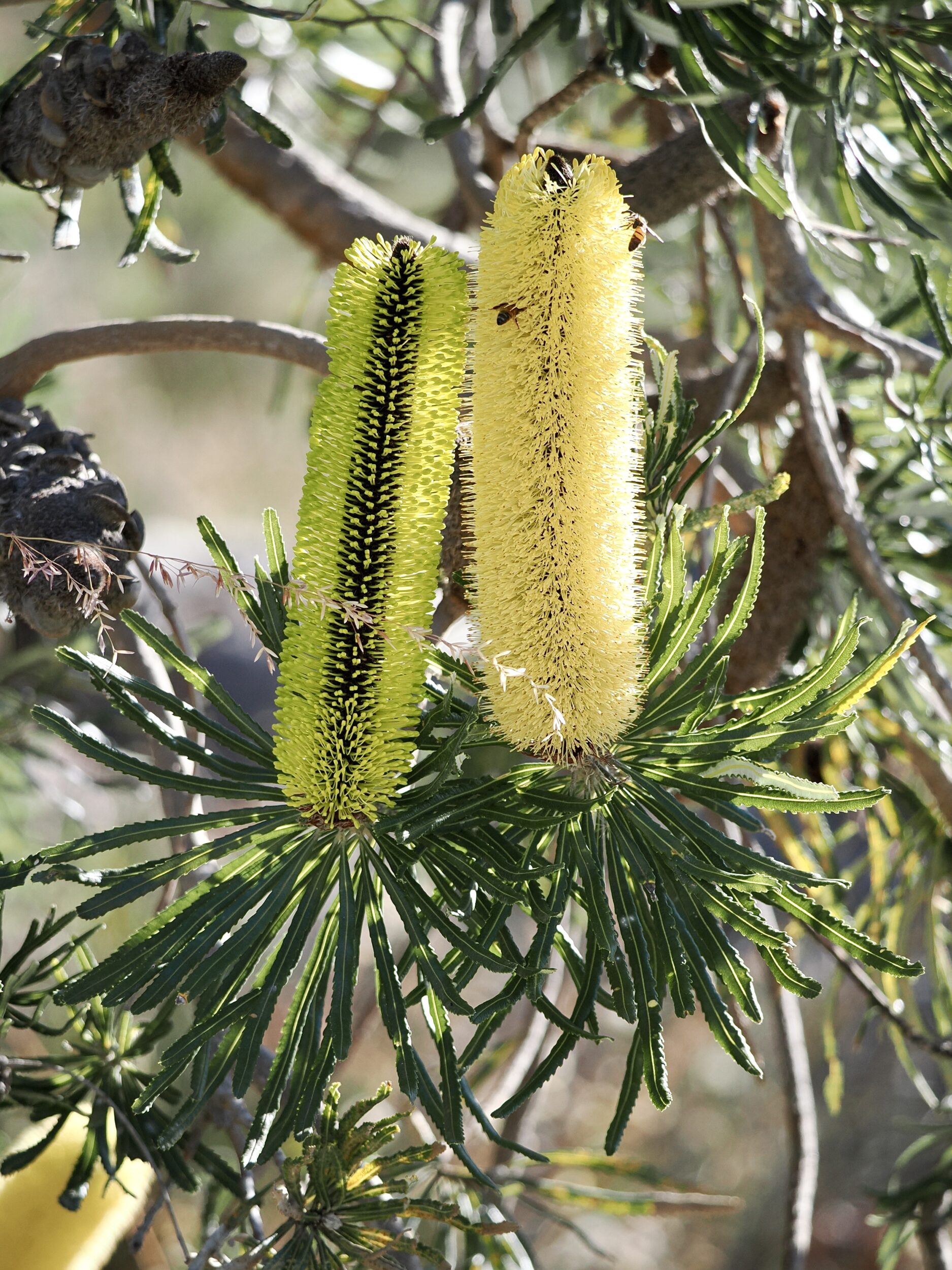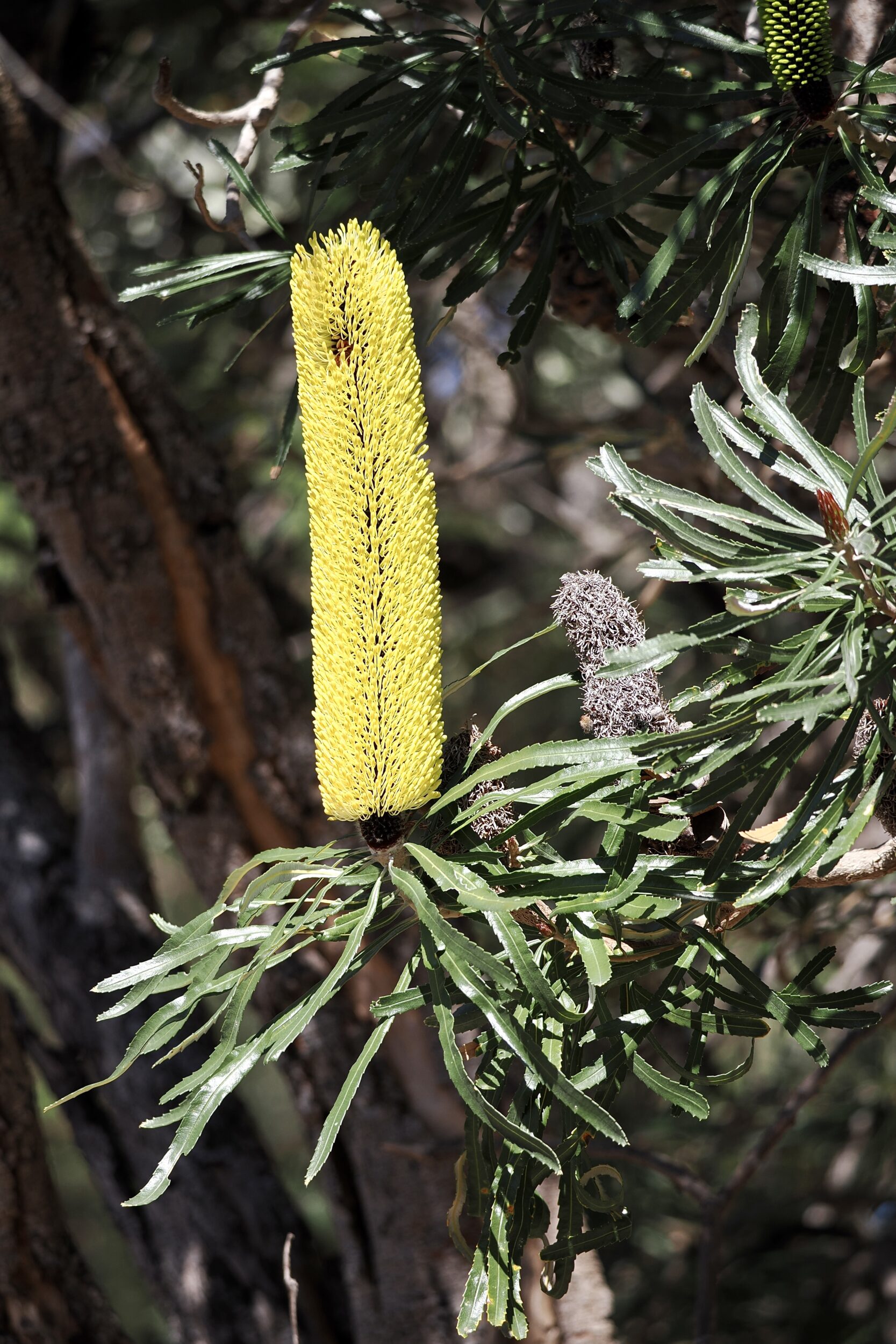This little series celebrates a favourite place, as it was on Sunday, 27 October 2024 – our first fully-waking day after our return to home turf.
(coming soon to Pelican Yoga: a teaser-series devoted to two contrasting parts of Indonesia. One is very sparsely populated. The other is “our” planet’s most-populous large island )
”European” calendars suggest it is still springtime in Perth.
In fact, the world’s greatest substantial-city, entirely-natural springtime flower-show ended some weeks ago.
Here, however, some wonderful plants are in flower at any time of year…plants which naturally occur only in WA’s southwest.
This post’s hero is one of them.
Banksia attenuata is commonly known as candlestick banksia.
Banksia species grow in many parts of Australia, but the overwhelming majority of them naturally occur only in southwest WA; many thrive only in a very small portion of it.
Banksia attenuata is WA’s most widespread banksia.
In some places it is definitely a “tree”; in others it is stunted, a “bush”.
Candlestick banksia’s spectacular flower spikes are a familiar sight from Kalbarri National Park, 600 ks north of Perth, through to Fitzgerald River National Park, more than 500 ks southeast of Perth.
Candlestick banksia spikes stand tall – up to 30 centimetres.
Each spike has at least several hundred flowers; one thousand is not an uncommon figure, and nearly two thousand were counted on one particularly spectacular inflorescence.
They are relished by many different pollinators – various insects, birds, and possums.
Some members of our own species – the humans who were already here, many thousands of years before any Union Jack fluttered, locally – enjoyed sweet drinks made by immersing Banksia attenuata spikes in water.
Discover much more about this species, here.

